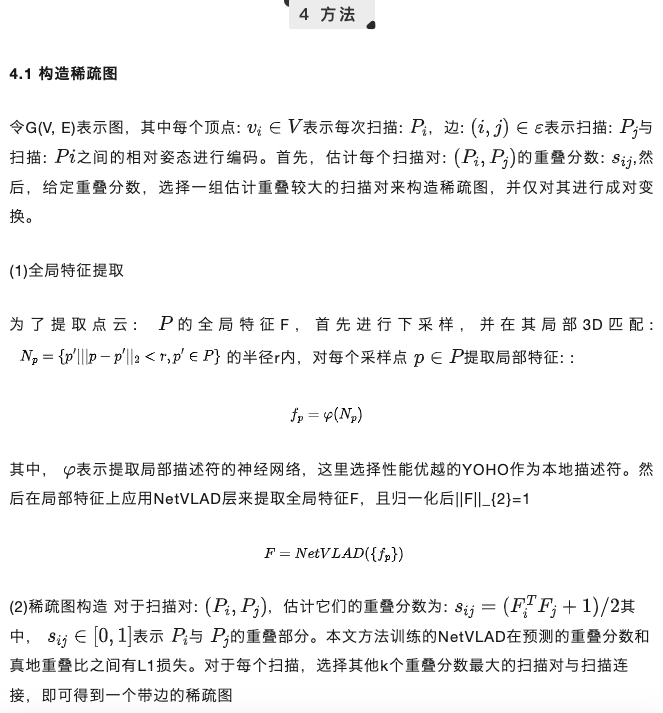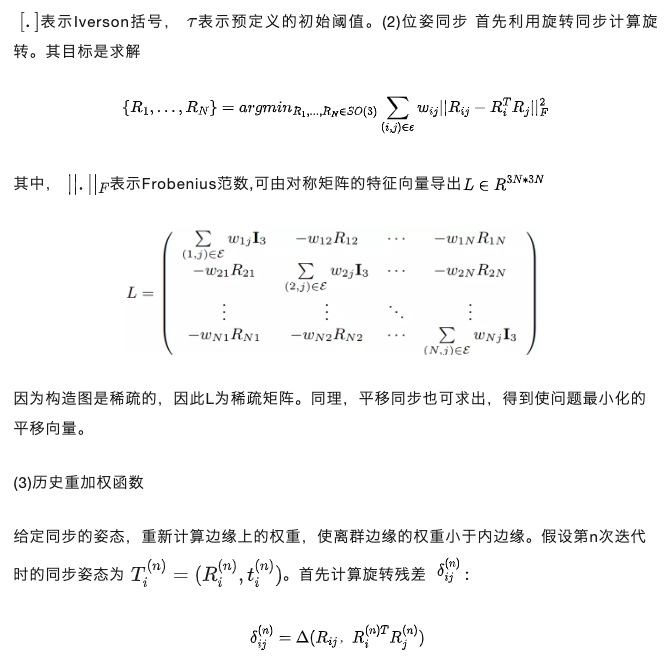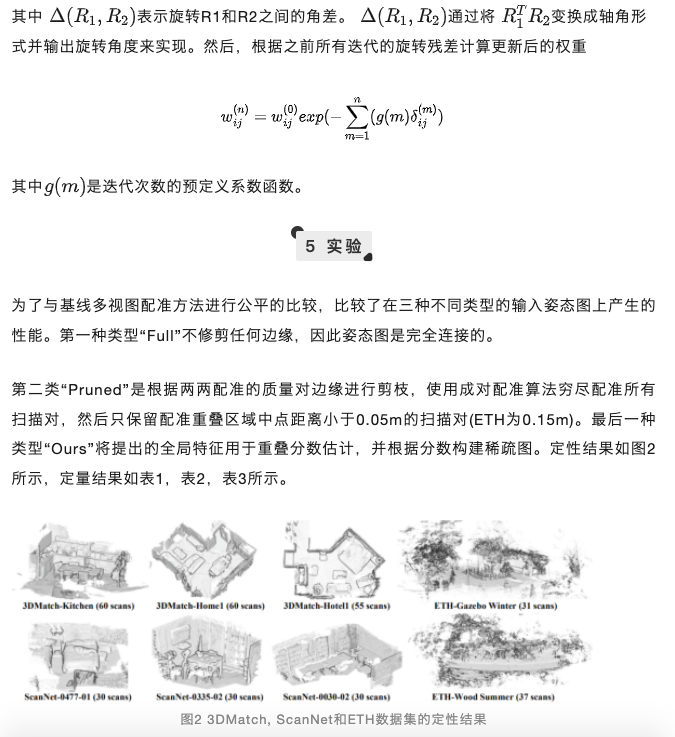Author of the paper | Haiping Wang, Haiping Wang, Haiping Wang,etal
Paper source | CVPR2023
Interpretation of the article | William
1 summary
Previous multi-view registration methods rely on exhaustive pairwise registration to construct a densely connected pose graph, and apply iteratively reweighted least squares (IRLS) on the pose graph to compute scan poses. However, constructing a densely connected graph is time-consuming and contains a large number of outlier edges, making it difficult for subsequent IRLS to find accurate poses.
To address the above issues, a neural network is proposed to estimate the overlap rate between scan pairs and construct a sparse and reliable pose map. Then, a new history reweighting function is designed in IRLS, which is robust to outlier edges on the graph.
Compared with the existing multi-view registration methods, the registration recall rate of this method on the 3DMatch dataset is increased by 11%, and the registration error on the ScanNet dataset is reduced by 13%. 70% reduction. Ablation experiments demonstrate the effectiveness of our method. The source code is open source at: https://github.com/WHUUSI3DV/SGHR
2 main contributions
1. Learned a good initialization of the input pose map, avoiding exhaustive pairwise registration and reducing the outlier ratio
2. A new history reweighting function is proposed to make the attitude correction of the IRLS scheme have stable convergence
3. The method of this paper was evaluated on three widely used benchmark data sets, 3DMatch/3DLoMatch, ScanNet and ETH, and all achieved relatively advanced results.
3 Network structure
For a set of scan points that are misaligned in the same 3D scene P=\{P_{i}|i=1,...,N\}, the goal of multi-view registration is to recover the underlying global scan pose

, applying the network structure shown in Figure 1.

Figure 1 Network structure






6 Conclusion
In this paper, a new method for multi-view point cloud registration is proposed. The key to the method is based on the learned sparse pose map construction, which can estimate the overlap ratio between two scans and is able to select pairs of scans with high overlap to build a sparse and reliable map.
Based on this, a new history weighting function is proposed, which improves the robustness of the IRLS scheme to outliers and has better convergence for pose correction. The proposed method achieves state-of-the-art performance on both indoor and outdoor datasets with much fewer pairwise registrations.
Source: Deep Blue School EDU